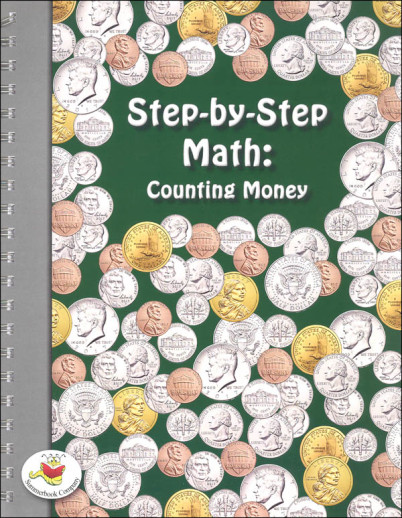We use cookies to make your experience better. To comply with the new e-Privacy directive, we need to ask for your consent to set the cookies. Learn more.
Step-by-Step Math: Math Counting Money
Step-by-Step Math: Counting Money teaches students to count coins from a penny to the $1 coin. Beginning with pennies and adding one coin at a time, students are able to master counting money. 110 pages. Reproducible.
With easy-to-understand explanations and instructions, this book offers a wide variety of exercises and situations to allow students the opportunity to master counting coins. Since paper or plastic coins are not included, students are encouraged to practice counting with real coins, using both sides of the coins.
Table of Contents- How to use this book
- Pennies
- Nickels
- Nickels and Pennies
- Dimes
- Dimes and Pennies
- Dimes and Nickels
- Dimes, Nickels, and Pennies
- Quarters
- Quarters and Pennies
- Quarters, Nickels and Pennies
- Quarters and Dimes
- Quarters, Dimes, Nickels, and Pennies
- Half Dollar
- Half Dollar and Review
- Dollar
- Dollar and Review
- Extra Review and Practice
- Answer Key
Combining instruction with practice and throwing in some mnemonic devices for good measure, this is easily one of the best math fact mastery systems that I've seen. Starting from the premise of the commutative property of addition (a.k.a. fact families) and building from easiest to remember facts to harder and harder, each book offers page after page of quick instruction tips plus illustrated problems as well as horizontal, vertical, number line and wheel practice. Along the way, lots of little tricks are introduced to help the child remember "his" facts. Color-coded flashcards (pull-apart cardstock) are added to the mix and used for daily drill. The books provide 135 pages of practice that cover basic addition and subtraction facts (0-9) or basic multiplication and division facts (again, 0-9). These pages are reproducible for classroom use and are followed by a reduced-page answer key. [The reduced pages are helpful for quickly correcting the fact pages.] The two sets of flashcards make up the rest of the spiral-bound book. Each book includes a certification of completion for each of its sets of facts (i.e. addition/subtraction or multiplication/division).
What makes these books notable is the combination of techniques that will make it easy for any type of learner to master these facts. Whether you're using a Singapore approach program that slides by fact memorization or have just noticed that your student needs a little extra work in this area, these books will provide a good mastery option. Since these are published by the Summerbook Company, it bears mentioning that they might make an excellent summer project. ~ Janice
| Product Format: | Paperback |
|---|---|
| Brand: | Summerbook Company |
| Grades: | 1-3 |
| ISBN: | 9781933055367 |
| Length in Inches: | 11 |
| Width in Inches: | 9 |
| Height in Inches: | 0.5 |
| Weight in Pounds: | 0.7 |

